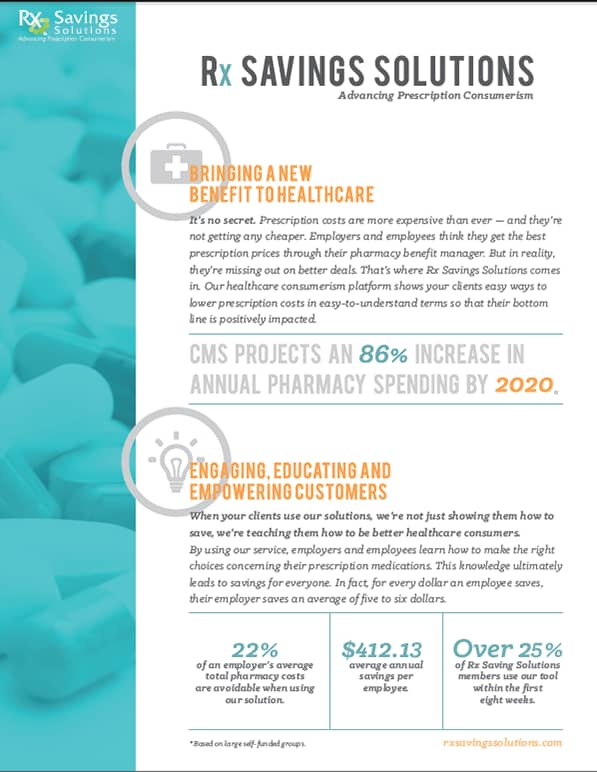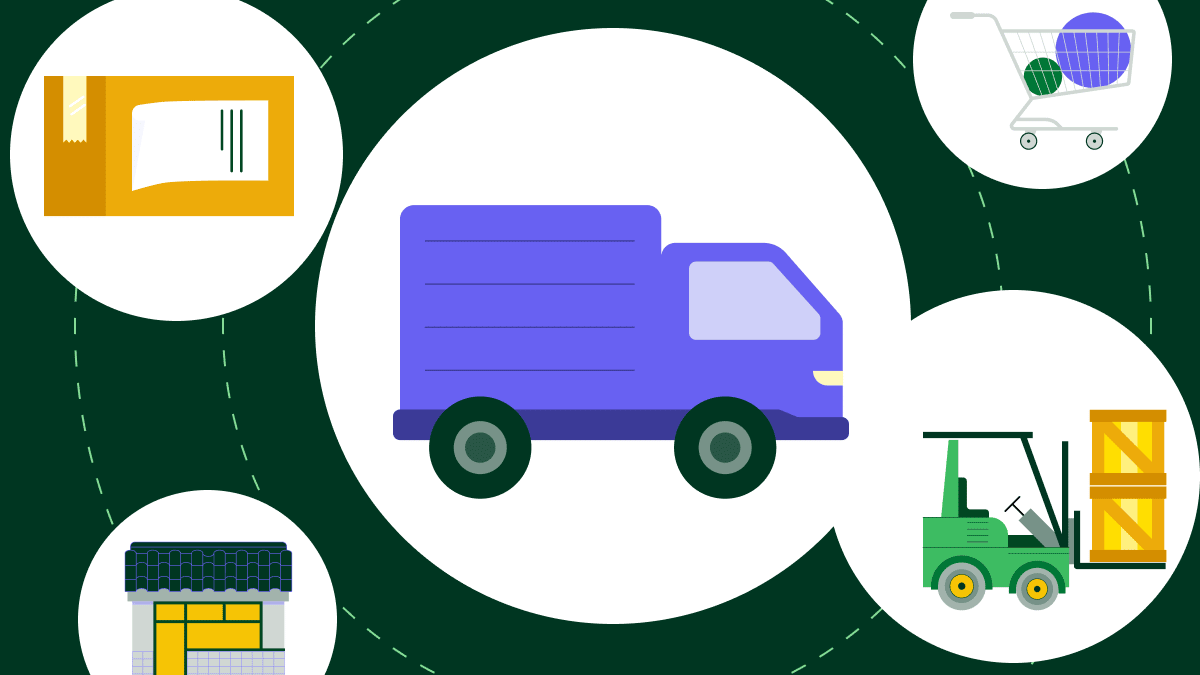Your role is to help prospects fully understand the benefits of your product or solution, but you don’t have the luxury of offering an extensive sales presentation to every prospective buyer.
A well-designed sales sheet can make a great first impression and help prospective clients quickly grasp what your product is and how it can help them.
In this article, we’ll look at exactly what a sales sheet is, how it can speed up your sales process and how to create your own sales sheet.
What is a sales sheet?
A sales sheet is a document that outlines your business’s offering and the problem it solves. It helps promote a product or service to potential customers or retailers and convince people to make a purchase.
It can also be used internally to get your teams up to speed on a product or service and ensure messaging is on point across departments.
Sales sheets typically cover all the key details a buyer might need to know, such as:
Important features
Product benefits
Product specifications
Also commonly referred to as sell sheets or sales slicks, sales sheets are designed to be visually appealing. They usually use product photos, images and infographics to hold the reader’s attention.
Here’s an example of a sales sheet from Havis. Two product images dominate the sales sheet, showing the product in action.

Unlike an advertisement that’s designed to generate early interest across a broad audience, sales sheets provide detailed information later on in the sales process. They’re designed for potential customers who’ve already shown some level of interest in the product or company.
Sales sheets traditionally take up just a single side of one sheet. The limited size means you must choose carefully what information to include and what to leave out. When you do, a well-designed sales sheet is a powerful marketing and sales tool for all types of businesses.
How sales sheets can streamline your sales process
Sales sheets highlight just the main features and benefits of your product to nurture interest, create a sense of urgency and move prospects closer to the sale.
The faster people progress through the sales cycle, from potential leads to happy customers, the more prospects you can move through the pipeline and the more revenue you generate.
Here are some more ways sales sheets can help move more prospects into your sales process more quickly:
They start the conversation
Sales sheets are often the first piece of collateral a prospect sees. They’re easy to share after an introductory call, during a sales meeting or at trade shows, so they’re your chance to start a conversation the prospect will want to continue.
A strong design and the right information will give readers a good idea of your product and what problem it solves. They’ll also help people see your company as professional and competent – you know what their problem is and you have a solution ready and waiting.
The particulars you present won’t explain every detail of your offering, but they’ll raise curiosity and give prospects a starting point from which to ask additional questions.
A well-designed sales sheet gives a concise overview that’s just long enough to hook readers, but brief enough to increase the chance they’ll read it when you share it.
Overcome objections quickly
Sell sheets also help with overcoming sales objections that potential buyers may have.
For example, if you’ve found that prospects are worried about the quality of your product, a section on “Why choose [Product]?” could explain how your manufacturing process produces the best results, reference your strict product testing and mention the specific quality standards you work to.
If people have expressed concerns about the cost of your service, add a table showing how quickly customers will start getting a return on their investment.
By addressing common concerns up front, sell sheets build trust and credibility with potential buyers, so they’re more likely to make a purchase.
Align teams
Sales sheets aren’t just for your customers. Use them internally with your sales and marketing team members to ensure that everyone is on the same page and sharing the same message with potential customers.
Whether creating a new landing page, an email marketing campaign or jumping on a sales call, your team can refer to the sales sheet to refine their pitch.
For example, a marketer can use a sales sheet to ensure their new social media post is highlighting the right features. A sales rep might refer to one during a call to confirm product specifications.
Sales sheets are a powerful sales enablement tool, enabling you to provide a consistent message and approach across all channels.
Essential elements of an effective sales sheet
While sales sheets may be small, there are several important components you must include to get the results you want. Here are the main elements of a high-performing sales sheet.
Headline
Start your sales sheet with an attention-grabbing headline that draws the reader in so they have to read the rest of the page.
The best headlines manage to create curiosity while clearly conveying the big benefit of your product or service.
One of the most effective ways to make the customer want to learn more is to keep the headline focused on them and their needs rather than on your product or company.
“We have the best accounting software” isn’t likely to convince anyone.
On the other hand, a headline like “Save ten hours a week with automated accounting software” highlights a tangible benefit that’s highly relevant to the customer.
Product image
People notice images before they read the text around them. Make sure the image on your sales sheet is professional and visually appealing. It should also accurately represent your solution, showcasing the features and benefits.
For both physical and digital products, this usually means using images that show the product itself. When you’re selling a service though, go with images that depict the end result.
In this example from Dole, the “Good crunch” creatively tells the reader about this snack, while the images illustrate what the product and packaging look like.

The text gives an idea of the benefits and the images clearly show buyers what the product will look like so they can picture it on their shelves.
Product description
The majority of the text on your sales sheet should describe and promote the product. Limited space means every word has to count, so focus on your solution’s unique features. What sets it apart from similar products on the market?
Keep the description customer-focused. Emphasize how each feature can help your customer solve a pressing challenge or otherwise fill an important need.
Look back at the Dole sell sheet and see how features are linked to specific benefits buyers want for their own customers. The brand uses phrases like:
“Bite-sized”
“Plant-based”
“Vibrant and eye-catching shelf displays”
By the time they’ve finished reading your sales sheet, your customers should be in no doubt about what your product can do for them.
For complex products, particularly in the B2B space, include a list of key specifications. This ensures prospects have all the details they need to verify the product fulfills their needs.
Call to action
Include a strong call to action (CTA) in your sales sheet to guide the reader through the sales funnel to the next step in the process. This might be visiting your website, calling your sales team or placing an order.
Decide on the next step you want customers to take and clearly tell them exactly what to do. When your prospect reads your CTA there should be no confusion or guesswork.
The reverse side of Dole’s front-and-back sales sheet bolds the website and lists the phone number where the reps can be reached:

Make the CTA stand out visually on the page, using bold fonts or contrasting colors, and place it in a prominent location.
Contact information
Make it easy for your customers to get in touch. Your sales sheet should have the contact details for your business, including phone number, website, social media accounts and email address.
QR codes are also increasingly popular and make it easy for potential buyers to contact your salespeople.
In the Havis sell sheet below, a QR code links directly to the product order page on the website:

Social proof
Look for quick ways to boost your credibility with prospective customers. For example, for software products, a badge from a review site like Capterra or G2 builds a sense of authority.

If you’re a service provider, consider highlighting any relevant certification for a similar effect.
How to create a compelling sales sheet
This step-by-step guide will ensure your sales sheet includes all of the main components necessary to grab your customers’ attention and drive conversions.
1. Identify your target audience
Before you write a single word for your sell sheet, you need to know who you’re targeting. Start by considering your ideal customer’s demographics, interests and pain points. Ask questions like:
What motivates them to make a purchase?
What challenges or obstacles are they facing?
What questions might they have about your product or service?
By answering these questions and developing a detailed buyer persona, you can tailor your sales sheet to address their specific needs, such as “fast acting” in a medical product sales sheet.
For example, once you know your prospect’s biggest obstacles, ensure that your sell sheet highlights the features that will help them overcome those challenges. When you know the questions your prospect is most likely to ask, create an FAQ section on your sales sheet that answers them.
2. Determine your key selling points
Your sales sheet needs to highlight your biggest selling points – the features or benefits that are most likely to resonate with the target audience you identified in the previous step.
Start by considering the unique value proposition of your offering. What makes it stand out from competitors? What problems does it solve or needs does it fulfill?
Bear in mind that your product’s value prop will likely differ depending on the audience. For example, the Dole sell sheet below is aimed at retailers, so the main selling points are purchasability and display options.

When reaching out directly to customers, Doles uses different value propositions, such as dietary benefits or convenience:

Think about the most important benefits your customers will experience when they use your product. For example, maybe they’ll be more efficient, save costs, perform better or enjoy an enhanced user experience.
3. Write persuasive copy
The next step is to create compelling copy that highlights those key selling points in a way that engages your target audience and motivates them to take action.
Start with your attention-grabbing headline summarizing the biggest benefit to your potential customer. Then use the rest of your sales sheet to describe how your offering solves problems, meets needs or improves upon existing solutions.
You might want to break your sheet into multiple sections to address different components of your offer, such as main features, common use cases and frequently asked questions.
Finally, include a strong CTA that tells readers what to do next. Effective CTAs are usually short and to the point:
Buy now
Subscribe
Sign up
Learn more
Get in touch
Download now
Unlike with websites and emails, a physical sell sheet won’t let you link your CTAs directly to where you want your prospects to go. Instead, you’ll have to give additional instructions. For example, “Buy now by calling [number]” or “Sign up at [website address]”. Alternatively, you can use a QR code that readers can scan to take them to the right web page.
4. Choose your visual design elements
Choosing the right imagery and design for your sales sheet plays a crucial role in capturing attention and conveying your product’s value.
Think about the overall sell sheet design. For example, is the color scheme appealing? Is it a wall of text or is there plenty of white space? Is it consistent with your company branding? Does the layout guide the reader through the text and emphasize the key points?
By combining high-quality visuals with effective design, you can create a sales sheet that is not only visually appealing but also highly effective in driving conversions.
5. Choose the most relevant social proof
Badges and certifications aren’t the only forms of social proof you can use in your sales sheet.
Think about which types of proof will be most relevant and persuasive to your audience. This might include customer reviews or testimonials, endorsements from respected industry experts, or statistics demonstrating your product’s effectiveness.
Choose social proof that’s recent, credible and specific to the benefits and features you’re promoting. Don’t forget to include the name and title of the person or organization providing the proof.
6. Provide essential information
While the bulk of your sales sheet will be about promoting your solution, it would all be for nothing if you missed any of the details readers need to actually buy the product.
At a minimum, ensure your contact details are obvious. Even better, tell readers exactly how to make a purchase. This might include pricing information, as well as instructions on how to redeem any discounts or special offers.
For example, the second side of a sales sheet for Tribalí Foods clearly points out ordering information.

It offers product information followed by a clear section for details on ordering. The company’s contact info is also easy to spot in a bright text box at the bottom of the page.
7. Review and refine
Once you’ve completed the first draft of your sell sheet, go over it again and double-check it’s ready to send.
Next, run through the previous steps to ensure the final draft targets the right market with the right benefits. Review your visuals, copy and social proof to see if there’s any way they could be improved.
Gather feedback from colleagues, stakeholders, industry experts or potential customers and use it to make further refinements to your sales sheet.
Finally, make sure there are no typos or errors that could hurt your credibility.
Examples of standout sales sheets
Let’s explore some effective sales sheet examples to provide inspiration and insight into how to create a compelling marketing tool for your business.
Inland
Packaging company Inland has created a sales sheet to promote their E-Beam technology, a solution that eliminates lamination from packaging so it can be recycled.
The sales sheet speaks to its audience’s concerns and pain points by highlighting product applications, features and eco-friendly benefits.

What makes this sales sheet stand out:
Headline points to three different product benefits
An easy-to-read layout with different sections for key points
Imagery shows both the technology and the finished product
Footer contains a CTA with plenty of ways to get in touch
Rx Savings Solutions
This sales sheet for Rx Savings Solutions gives a simple overview of a complex subject.


What makes this sales sheet stand out:
Icons call out main benefits, offering a new healthcare benefit, helping the reader’s clients by educating them and empowering them to be better healthcare consumers
Convincing statistics called out on the first page show readers how the product will benefit them
Step-by-step instructions show how easy it is to get clients up and running.
Clear CTA with contact details
Poten & Partners
This sell sheet outlines an online database from Poten & Partners. Its easy-to-scan layout gets all the relevant information onto one side of one page.

What makes this sales sheet stand out:
Crisp clean design
An image that shows a strong benefit: the product can be used across different devices
Lots of white space with easily scannable copy
Clear CTA (“contact us”) with contact info and a scannable QR code for easy access

Get started with a sales sheet template
Further streamline your sales process and improve customer engagement by using sales sheets alongside your CRM software.
For example, Pipedrive’s Smart Docs feature lets you save sales sheet templates and share them with your team. Use them internally for sales enablement or send them directly to leads and get notified whenever they’re opened.
As we’ve seen with our examples, there are plenty of variations within sales sheets, with lots of room to experiment.
If you’re looking for more inspiration, sites like Canva, Xara and Visme have hundreds of free sell sheet templates to choose from and modify.
To get started outlining your content, use the sell sheet template below.
Customize it to fit your specific product or service, branding and messaging. Add or remove sections as needed to create a unique and compelling sales sheet that effectively promotes your business.
Here are some of the elements included in the sales sheet template:
Product or service name | Display the name of your product or service to grab the attention of potential customers and make it clear what you’re offering. |
Benefit-focused headline | This should clearly convey the main benefit of the product or service being offered, highlighting its unique selling point and grabbing the reader’s attention. |
Feature 1, 2 and 3 headings | Short paragraph expanding on the benefits of key features. |
Heading with common objection in the form of a question | Address common objections that potential customers may have in the form of a question. |
Response to objection | Provide a brief response to each objection to help overcome any hesitations they may have about purchasing your product or service. |
Enter your email below to receive the full template
Download your free sales sheet template
Final thoughts
The best sales sheets present compelling reasons to purchase all on one page. However, they’re most effective when they’re used as part of a larger overall campaign.
Create sales sheets that complement the rest of your marketing materials and sales strategy. Providing a consistent message across your materials helps move your prospects through the sales pipeline and converts leads into happy customers.






